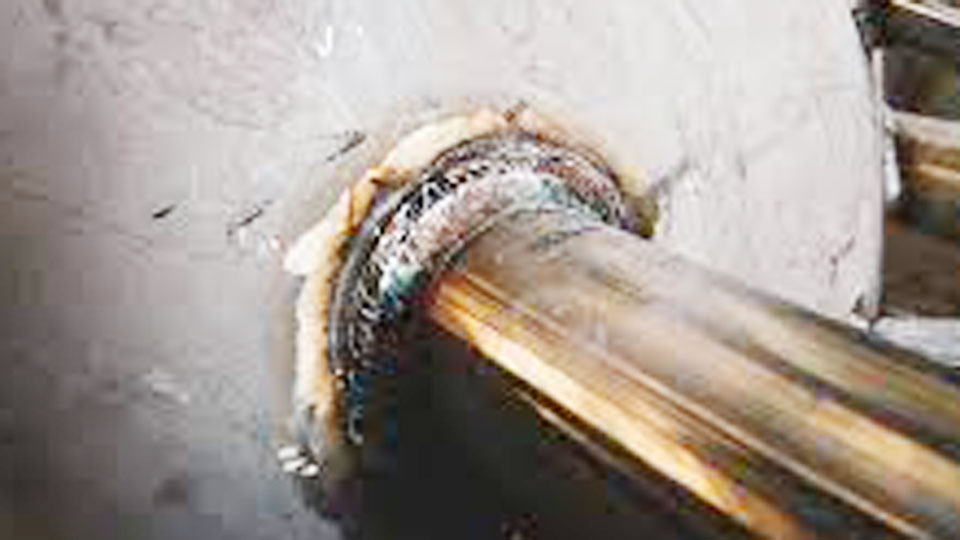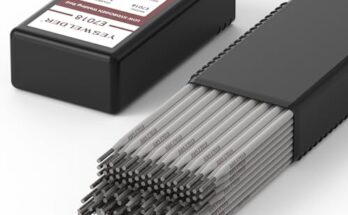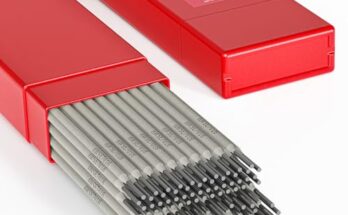If you’ve ever tried welding galvanized steel pipe, you know it’s not as simple as welding regular steel. The zinc coating that protects the steel from rust also introduces some serious challenges when welding. It can cause porosity, weak welds, and even harmful fumes if you don’t handle it properly.

Image by weldingmastermind
I’ve had my fair share of experience welding galvanized steel, and trust me—it’s something you need to approach with caution. But don’t worry, I’ll walk you through everything you need to know.
If you’re doing plumbing, structural work, or fabrication, I’ll cover the best techniques to get a clean, strong, and safe weld on galvanized steel pipe.
Let’s dive in!
What Makes Galvanized Steel Different?
Galvanized steel is simply regular steel coated with zinc to prevent rust. This coating provides great corrosion resistance, making it ideal for outdoor and industrial applications. However, welding galvanized steel comes with challenges, mainly due to:
- Zinc vaporization: The high heat from welding burns off the zinc, producing toxic fumes and weakening the weld.
- Porosity: The vaporized zinc can create tiny holes in the weld, making it weaker.
- Cracking: If not done properly, the weld can develop brittle cracks over time.
That’s why welding galvanized steel requires extra preparation, proper technique, and safety precautions.
Safety Precautions Before Welding
Welding galvanized steel releases zinc oxide fumes, which can cause “metal fume fever.” This condition leads to symptoms like chills, fever, nausea, and dizziness. While it usually clears up in a day, repeated exposure is dangerous.
To stay safe:
- Work in a well-ventilated area: If possible, weld outdoors or use a fume extraction system.
- Wear a respirator: A P100 or N95 respirator will help filter out toxic fumes.
- Use proper PPE: A welding helmet, gloves, and fire-resistant clothing are essential.
- Avoid breathing fumes: Position yourself so the fumes move away from your face.
How to Prepare Galvanized Steel for Welding
Good preparation makes all the difference when welding galvanized steel pipe. Here’s what you need to do before striking an arc:
Remove the Zinc Coating
To avoid porosity and excessive fumes, it’s best to remove the zinc coating at least 1 to 2 inches from the weld area. You can do this using:
- A grinder with a flap disc or wire wheel
- Sandpaper or a file
- Chemical stripping solutions like muriatic acid (Use with extreme caution and proper PPE)
After removing the coating, wipe the surface clean with acetone or alcohol to remove contaminants.
Choose the Right Welding Process
Different welding methods can be used for galvanized steel, but some work better than others.
| Welding Process | Best For | Pros | Cons |
|---|---|---|---|
| Stick Welding (SMAW) | Thicker pipes, fieldwork | Handles dirt and coatings well, portable | More fumes, rougher welds |
| MIG Welding (GMAW) | Thin to medium pipes, indoor work | Fast, clean welds, good penetration | Requires shielding gas |
| TIG Welding (GTAW) | Thin pipes, precise welds | High-quality, smooth welds | Slower, requires skill |
| Flux-Cored Welding (FCAW) | Outdoor welding | Works well in windy conditions | More spatter, requires cleanup |
For pipe welding, stick welding (SMAW) or MIG welding (GMAW) is most common.
Select the Right Filler Metal
The right electrode or wire will improve weld strength and reduce defects.
- Stick Welding: Use 6010 or 6011 for deep penetration or 7018 for smoother, stronger welds.
- MIG Welding: Use ER70S-6 wire with 100% CO2 or a 75/25 argon-CO2 mix for good penetration.
- TIG Welding: Use ER70S-2 for clean, precise welds.
Preheat the Steel (If Necessary)
For thicker pipes, preheating to 250-400°F reduces cracking. You can use a propane torch to warm up the area before welding.
Welding Techniques for Galvanized Steel Pipe
Now that everything is prepped, let’s talk about how to weld galvanized steel pipe properly.
Stick Welding (SMAW) Technique
If you’re using stick welding, follow these steps:
- Use DC reverse polarity (DCEP) for deeper penetration.
- Hold a tight arc to prevent excessive heat input.
- Use a drag technique with a slight weave motion.
- Make short weld beads to control heat and avoid burn-through.
- Chip off slag between passes to ensure clean fusion.
MIG Welding (GMAW) Technique
For MIG welding, use these settings:
- Voltage: Medium to high (depends on pipe thickness).
- Wire Speed: Adjust for steady feeding without spatter.
- Travel Speed: Move at a steady pace to prevent overheating.
- Use a slight push angle (10-15°) for good penetration.
TIG Welding (GTAW) Technique
For TIG welding, focus on:
- Using a sharp tungsten electrode for precision.
- Maintaining a consistent arc length to avoid contamination.
- Keeping heat input low to prevent warping.
- Using a steady filler rod addition for smooth welds.
Post-Weld Cleanup and Galvanizing Repair
After welding, the zinc coating will be burned off, leaving the steel exposed to rust. To restore corrosion resistance:
- Grind smooth any rough areas to remove oxidation.
- Apply a cold galvanizing spray (zinc-rich paint) to the welded area.
- Use a zinc soldering stick for extra protection.
Common Mistakes to Avoid
Welding galvanized steel can be tricky, and making mistakes can lead to weak welds or health hazards. Here are some things to avoid:
- Not removing the zinc coating: This leads to excessive fumes and poor weld quality.
- Using the wrong electrode or wire: A mismatched filler metal can cause cracking and porosity.
- Overheating the steel: This can warp the pipe and weaken the weld.
- Skipping proper ventilation: Always work in a well-ventilated area to avoid fume buildup.
Conclusion
Welding galvanized steel pipe requires extra preparation and care, but with the right approach, you can achieve strong, reliable welds. Removing the zinc coating, using proper welding techniques, and following safety precautions are key to success.
Whether you’re using stick, MIG, or TIG welding, knowing how to handle galvanized steel’s unique challenges will help you get the job done safely and effectively.
Take your time, protect yourself from fumes, and always restore the galvanized coating after welding to keep the steel from rusting.
FAQs
Can you weld galvanized steel without removing the zinc coating?
You can, but it’s not recommended. Welding without removing the zinc creates excess fumes, weak welds, and porosity.
What happens if you inhale galvanized welding fumes?
You can get metal fume fever, which causes chills, nausea, fever, and dizziness. Always work in a ventilated area and wear a respirator.
What is the best electrode for welding galvanized steel?
For stick welding, use 6010, 6011, or 7018 electrodes. For MIG welding, use ER70S-6 wire with shielding gas.
Can you MIG weld galvanized steel with flux core?
Yes, but flux core creates more spatter, so it’s better to use gas-shielded MIG for cleaner welds.
How do you prevent galvanized steel from rusting after welding?
Apply cold galvanizing spray or zinc-rich paint to restore corrosion resistance.


